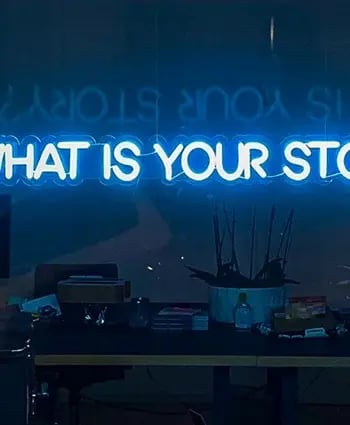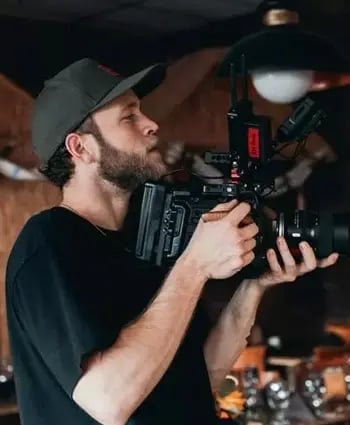Mastering Audience Engagement in Video Production
Unlock the power of customer psychology to craft videos that captivate and engage your audience.
Video content has surged to the forefront as a crucial medium for engaging audiences. But creating videos that genuinely connect with viewers requires more than just high-definition cameras and snazzy graphics. You need to delve into the realm of customer psychology to craft videos that resonate on a deeper level.
In this guide, we’ll explore the essentials of harnessing customer psychology in video production.
Understanding the Mind of the Viewer
First, let’s establish the foundation. Understanding customer psychology is about delving into what makes your audience tick. What motivates them? What are their aspirations, fears, and desires?
The Attention Span Dilemma
It’s no secret that our attention spans are dwindling. A study by Microsoft revealed that the average human attention span is down to 8 seconds. In practical terms, this means your videos must grab attention immediately. Employ intriguing visuals, pose a question, or use a powerful statement right at the beginning.
The Art of Storytelling
Humans are hardwired to love stories. Stories engage us, evoke emotions, and are memorable. Integrating storytelling into your videos can forge a deeper connection with your audience. Create a narrative that incorporates a clear beginning, middle, and end. Use characters your audience can relate to, and don't forget the power of a compelling storyline.
Emotional Resonance
Emotions play a huge role in decision-making. Studies show that people rely more on emotions than information when making decisions. Use this to your advantage by creating videos that strike an emotional chord.
Whether it's humour, nostalgia, excitement, or empathy, pick an emotion that aligns with your message and weave it throughout your video.
The Colours of Emotion
Colour psychology is an essential aspect of customer psychology. Colours evoke specific emotions and can be used strategically.
- Red: Use red to create urgency or show importance.
- Blue: Convey trust and calmness with blue.
- Green: Signify growth, health or environmental themes.
- Yellow: Great for creativity and positivity.
- Purple: Portray luxury or mystery.
- Black: Use to convey elegance or power.
- White: Signifies purity, cleanliness, and simplicity.
Choose colours that align with the emotions you wish to evoke and the message you’re conveying.
The Auditory Experience
Sound is as crucial as visuals in video content. It sets the tone and mood.
Music: The Universal Language
Carefully select music that complements the emotion and pace of your video. Upbeat tunes can make content feel energetic, while slower music might be used for more serious or emotional videos.
The Voice That Speaks
The choice of voiceover, if used, is also vital. A relatable voice that aligns with your audience's preferences can make all the difference. Moreover, the tone and modulation should complement the content.
The Human Connection
Incorporating human elements into videos can significantly enhance reliability.
Faces: Windows to the Soul
We’re biologically wired to focus on faces. Including close-ups of faces expressing emotions can captivate viewers and keep them engaged.
Mirror Neurons: Feeling Through Watching
Humans have mirror neurons that fire both when we perform an action and see someone else perform it. Utilise this by showing people interacting with your product or service.
Social Proof: The Bandwagon Effect
We tend to do what others are doing. Incorporate testimonials and user experiences to show that others are endorsing your product or service.
Framing Content with Visual Composition
When it comes to visual storytelling, the way you frame and compose your shots is paramount in influencing how your message is interpreted and received. Think of framing as a way to highlight the important aspects of your scene. Composition encompasses how different elements are arranged within the frame.
This includes the background, objects, characters, and lighting. A well-composed shot takes into account the visual balance and focuses the viewer's attention on the key elements of the scene. It sets the tone and context, which directly affects the emotional response and engagement of the audience. For instance, using a close-up shot can create a sense of intimacy and highlight emotions, while a wide shot can establish the setting and convey scale.
The Rule of Thirds
The Rule of Thirds is a fundamental principle in visual composition that can greatly enhance the aesthetic appeal of your videos. Imagine dividing your frame into nine equal rectangles, three across and three down.
The rule of thirds involves aligning the key elements of your scene along these lines or at the points where they intersect. Placing elements off-centre, according to the rule, often looks more natural and visually interesting than placing them dead-centre.
For example, in an interview video, you might place the subject's eyes at one of the top intersections, which tends to feel more engaging and natural than having them directly in the centre of the frame.
Symmetry and Patterns
Humans are naturally drawn to symmetry and patterns; they create a sense of order and balance that our brains find pleasing. Utilising symmetry in your video composition can create powerful imagery that captivates the viewer. For example, reflecting an image across a central axis can create an almost soothing sense of balance.
Patterns, on the other hand, can be used to create visually engaging backgrounds or to draw attention to a recurring theme. They can also be used to create rhythm and movement within a scene. However, it’s important to use symmetry and patterns judiciously, as overuse can make the video feel too staged or artificial.
The Power of Editing
Editing is where the magic happens. It’s where the story comes together. Editing is not just about cutting and joining clips; it’s an art form that involves a multitude of elements including pacing, transitions, sound, and colour grading.
The way you edit your video can drastically alter the emotion, tension, and engagement of your content. Fast-paced editing can create excitement or intensity, whereas slower, more deliberate editing can be used for emotional or dramatic scenes. Furthermore, the use of music, sound effects, and silence can significantly enhance the atmosphere and mood.
Keep it Crisp
In an age where viewers are bombarded with content, brevity is key. It’s essential to keep your video content sharp, focused, and to the point. Avoid the temptation to include everything. Each scene and shot should serve a purpose and drive the story forward. If a segment doesn't add value or contribute to the overall message, it's best to leave it out.
Keep in mind the dwindling attention spans of modern audiences; the longer your video, the more likely viewers are to drop off before the end. Moreover, a crisp and concise video is more likely to be shared, increasing its reach and impact.
Transition Wisely
Transitions are more than just fancy ways to move from one scene to another. When used correctly, they can seamlessly weave together different segments of your video and maintain the flow of your story. However, it's important to choose transitions that complement the mood and pacing of your video.
For instance, a fast-paced action sequence might benefit from quick cuts, while a more sombre, emotional scene could use slower, fade transitions. Overusing flashy transitions can distract from the content and come across as unprofessional, so it's best to use them sparingly and purposefully.
Call to Action: The Final Nudge
What do you want viewers to do after watching your video? A clear and compelling call to action is critical. Whether it’s visiting a website, signing up for a newsletter, or making a purchase, be clear and concise.
Metrics and Adaptation
Finally, no video strategy is complete without analyzing performance and adapting. Monitor audience engagement, view durations, and conversion rates. Use this data to refine your approach.
Wrapping Up
Using customer psychology in video production is an art and science. By understanding what engages the human mind and employing techniques that leverage these insights, you can create videos that not only captivate but also resonate with your audience on a deeper level.
From colours, music, and storytelling to composition and editing, each element should be meticulously crafted and aligned with the psychological drivers of your audience. This deep connection is what will set your content apart in the crowded world of digital media. Happy creating!
Written by Jonathan English CEO for Venture Videos — a full-service video production agency that specialises in producing creative videos & campaigns that get real results.





